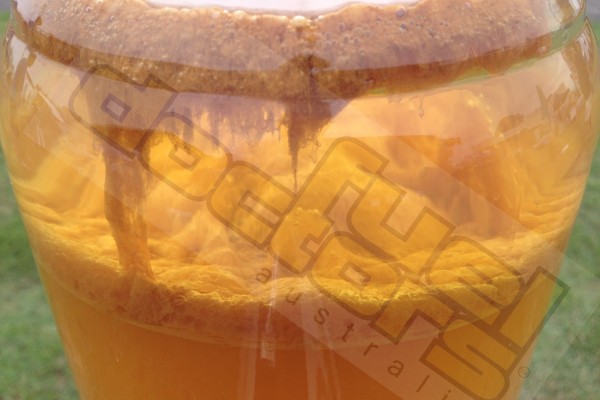Contaminated Fuel The Facts.
Fuel Doctors have been cleaning and installing service station fuel storage tanks for decades now, and has a very unique insight into where dirty diesel comes from. Unfortunately, it all has to do with money.
Underground fuel tanks on average are 2.5 mtrs in diameter and a metre underground and vary in length up to 12 mtrs; they have a vent, suction and delivery drop tubes and a dip tube that is predominantly in the centre of the tank, the suction stub pulling the fuel up to the bowser is 150mm off the bottom of the tank with the mindset that ground water from defective caps and seals or inadvertently delivered water will sit below the suction stub, for future removal.
Free water and condensation provides the oxygen for fuel bug spores to germinate, this water is managed at site either by water finding paste of electronic monitors, once the water level gets to 100mm or more Fuel Doctors are called to pump it out.
The problem for the consumer is that when a road tanker fills the underground tank it is doing so through a 100mm drop tube welded to the bottom of the tank, the fuel falls from 5 mtrs of head hitting the bottom at 1000 ltrs per minute stirring up the sludge and water sitting below the suction stub, until this debris settles back to the bottom, below the suction stub you are pumping small amounts of suspended water, rust and microbial material into your tank, the time it takes for the debris to settle in the underground tank is determined by numerous factors, diesel or petrol, standard or premium , volume and length of time the contamination has been in the tank and ambient temperatures.
Yes, fuel bowsers have rudimentary filters, however they are designed to protect the bowser not you, they are made of gauze to protect the pump from tank bottom solids like rust and stones, the stirred up emulsified water and fungal material passes straight through them into your tank.
The microbial material is heat sensitive being of the same family as brewer’s yeast and bakers yeast, so three meters below ground in the storage tank his environment is on average 5 degrees C. your fuel is circulating in a common rail system at temperatures of 80 to 120 degrees C consequently he grows like a cancer throughout your fuel system, slowly but surely contaminating and destroying the entire fuel system. I am not writing this to scare you or sell more Fuel Doctor I am simply informing you of what I have to deal with every day of my working week for the past twenty six years, others will tell you their stories of rebuilding fuel system components as a result of the facts presented here.
Due to the inordinate increase in regulatory infrastructure and compliance procedures within the service station and truck-stop industry, combined with EPA and local government documentation for the collection, transport , storage, processing and disposing of regulated waste, as well as the plethora of licences required to perform these tasks, it is not unusual for an invoice of $1.600.00 to attend site and remove 500 ltrs of contaminated petrol out of one tank, with an average of six tanks per site you can see why they are not pumped out until it is absolutely necessary or until the complaints are to frequent.
Now you have a better understanding why Fuel Doctors had no choice in the early nineties but to make their own formulated tank cleaning chemical to suit all fuels as the commercially available fuel additives were not and are still not formulated for what is going on in the real world of Australian servo and truck-stop storage tanks.
For your peace of mind quality assure every tank of fuel with Fuel Doctor at 1ml per ltr of fuel, because an ounce of protection is better than a ton of cure.

